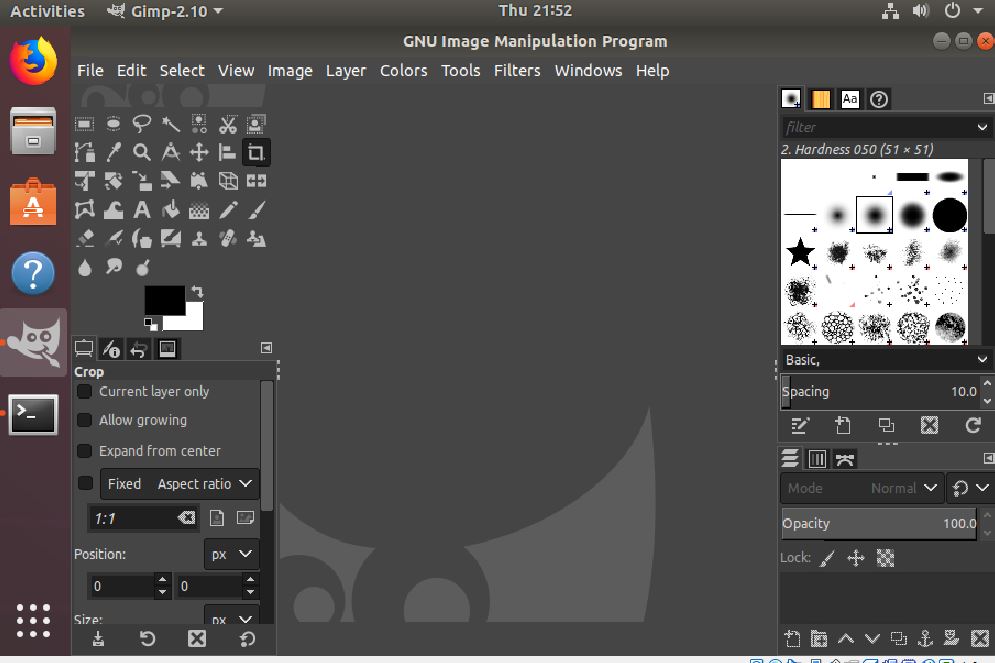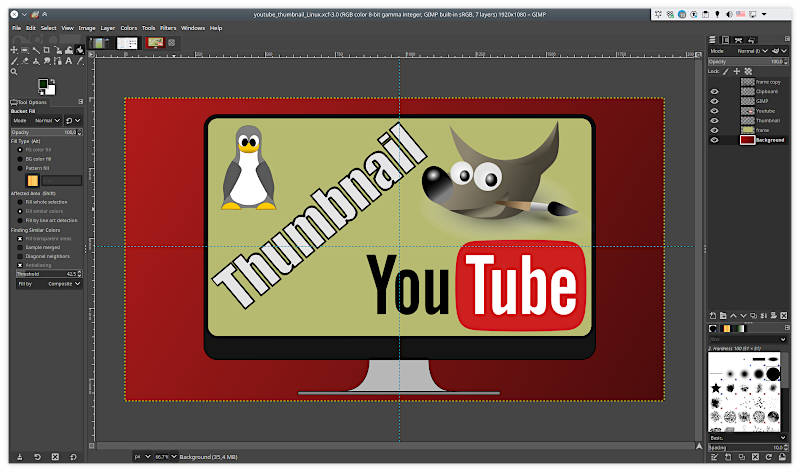

- Gimp linux terminal how to#
- Gimp linux terminal install#
- Gimp linux terminal update#
- Gimp linux terminal upgrade#
- Gimp linux terminal software#
After that, the following notification shows on the terminal window: The GIMP installation using snap takes a few seconds to complete.
Gimp linux terminal install#
So, first, install the `snapd` package by using the below-mentioned command: $ sudo apt install snapd $ sudo snap install gimp The following gimp application interface shows on your Debian 11 desktop:Īnother alternative way to install GIMP is by using the snap application.


To access the interface of the GIMP application, go into the application menu and launch it on your desktop by searching ‘gimp’ via the application search bar:Ĭlick on the GIMP application icon to launch it. Display the install gimp version using the below-mentioned command: $ gimp -versionįrom the above screenshot, you can see that the GNU Image Manipulation Program version 2.10.22 is installed now on your Debian 11 system. GIMP is included by default in the system base repository, however, you can install it by running the below-given command: $ sudo apt install gimpĬongratulations! The GIMP installation successfully has been completed on your Debian 11 system.
Gimp linux terminal upgrade#
$ sudo apt upgrade Step 2: Install GIMP using apt repository
Gimp linux terminal update#
So, use the below-mentioned commands to refresh your system apt packages: $ sudo apt update Using this method, you can install GIMP directly from the base repository of your system by following a few steps: Step 1: Update system repositoryīefore starting the GIMP tool installation on your Debian system, make sure all installed Debian packages are upgraded to the latest version. To install the GIMP on Debian 11 system, follow the below-provided steps: Method # 01: Install GIMP using the apt repository
Gimp linux terminal software#
You can install gimp software on your Debian 11 system by accessing the system root privileges. We will install GIMP on Debian 11 bullseye system in this tutorial by using two different methods using the apt repository and installing gimp via the snap application. It also offers more amazing features such as transcoding between different image formats, helps in free-form drawing, and many more graphics specialized tasks. It is a free and open-source graphics editing tool that is specifically used for image manipulation and editing. flatpak run stands for GNU Image Manipulation Program. Once installed, use the below command to launch the app. Now, restart your system and run the following command to install it: flatpak install flathub Or, after installing Flatpak, you can add Flathub as a remote by entering: flatpak remote-add -if-not-exists flathub You can either save the remote or refuse it, to continue installation.

This will ask you to save the Flathub remote for future installations (If you have not added Flathub repo as your remote earlier). Once you have Flatpak support, use the command below to install GIMP: flatpak install
Gimp linux terminal how to#
You can refer to the official Flatpak page to know how to enable Flatpak support in other Linux distributions. Use the commands below to install Flatpak on Ubuntu. You need to enable Flatpak support first. On Ubuntu, there is no Flatpak support out of the box. If you are using a Linux distribution with Flatpak and Flathub enabled by default, you can find the Flatpak package through the software center (like Pop!_OS, Fedora). Method 3: Installing GIMP via Flatpak in Ubuntu-based Linux distributions Or open a terminal and run: sudo snap remove gimp Or you can use the command line to install: sudo snap install gimp GIMP as Snap in Software CenterĬlick on " Install" button to install GIMP on your system. Now, open the Software Center and search for Gimp. For other Linux distributions, please ensure that you have Snap support enabled. You can use Snap for installing the latest version of GIMP. Sudo apt autoremove Method 2: Installing GIMP via Snap Package To remove Gimp, open a terminal and run: sudo apt remove gimp If you want to install it from the official repository, then open the terminal and enter: sudo apt install gimp Since it's been some time since the release of version 2.10, various releases of Ubuntu offer different point release versions of Gimp 2.10. Method 1: Installing GIMP via Distribution Package Repositories If it does not, use either Snap, Flatpak, PPA or source code methods to install GIMP. I advise checking the software center or package manager of your Linux distribution and see if it provides GIMP 2.10.x or not. On Ubuntu, you can find the snap version of GIMP in the Software Center and install it from there. Since it has been some time from the release, GIMP 2.10.x should be now available for most Linux distributions. Install GIMP on Ubuntu and other Linux distributions It is also available on Windows and macOS. The project was started in 1996 and in the last 25+ years, it has become the default image editor on almost all major Linux distributions.


 0 kommentar(er)
0 kommentar(er)
